How long has it been?
I’ve made the page we’re going to build below public, where you can duplicate it to your own workspace: https://scales-family.notion.site/Since-69bc560d0b1144a8817efd737bfa44aa. Enjoy and happy reading!
🔗

I like to make sure I do certain things regularly. Not every day, but regularly. I want to make sure I change my sheets enough, I change the blade in my razor enough, and go to the gym enough (I should go every day, but until then...)
Let’s do it in
 Notion. We’ll learn about Relations, Rollups, and Formulas.
Notion. We’ll learn about Relations, Rollups, and Formulas.
To your brand new page, create a database. These will be the “Things” we’re tracking the days since.

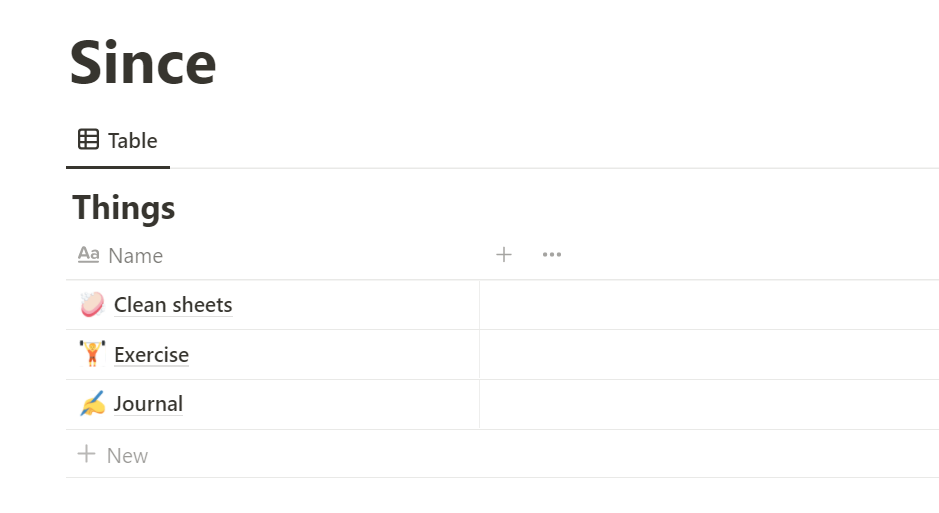
Then, we’ll create a second table to track each time we do one of these things. We’ll need three things:
-
Name (Notion needs items in a database to have a name. It can be blank)
-
The date it happened
-
The type of event it was
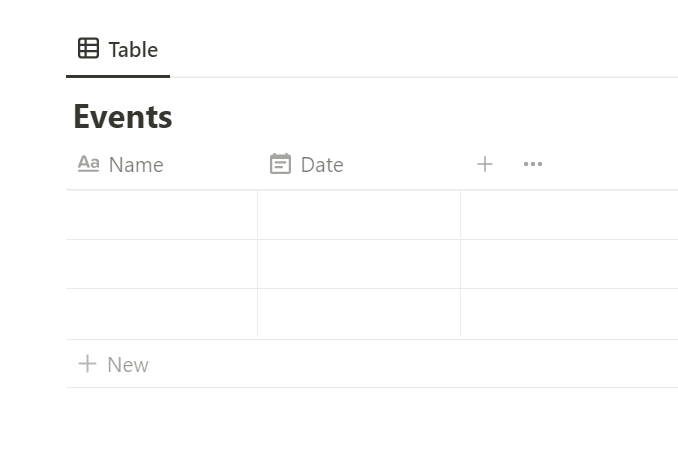
For “the type of event” we’ll use a “Relation” which allows us to reference another table. In this case, we’ll reference the “Things” table.
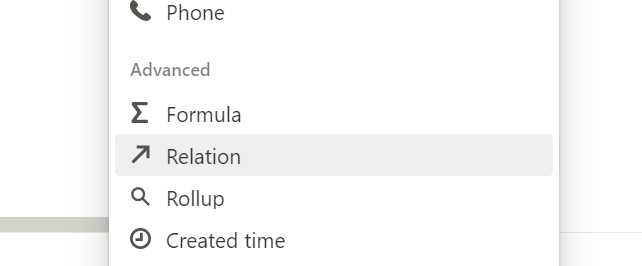
Then we’ll make sure to select our original Things database.
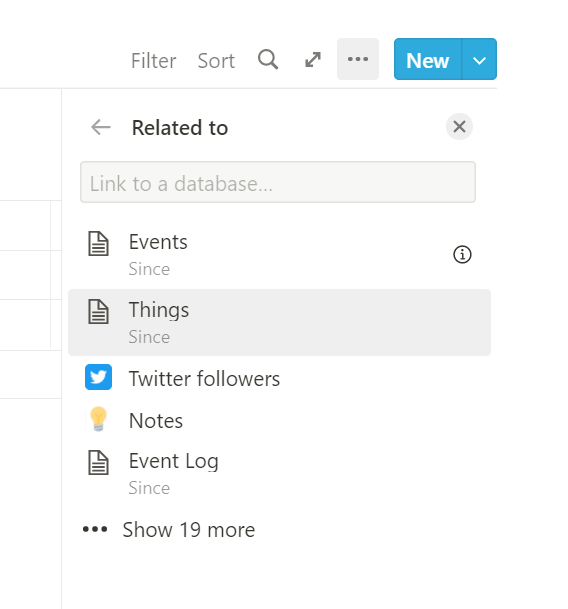
And thanks to the new fancy relation menu, we can choose whether or not “Things” also points back to “Events.” We want it to! We’ll see why in just a second.
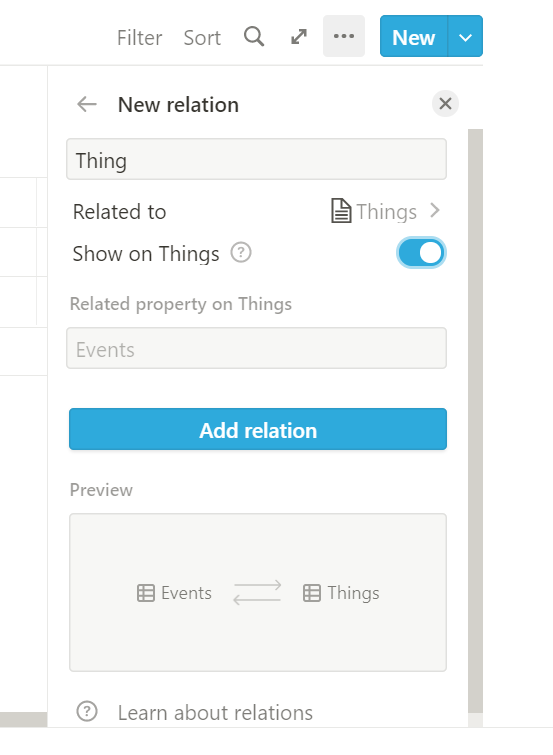
Now let’s add some events to our table.
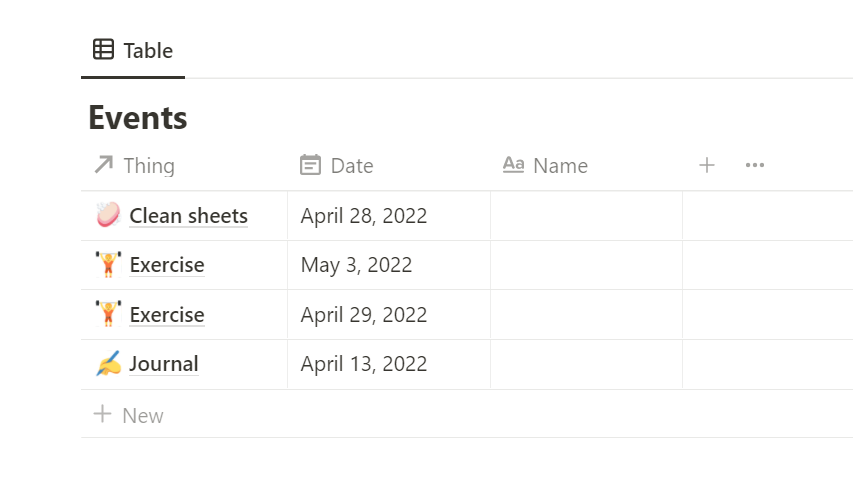
Now, the fun part. Check out “Things” table, and you’ll see some “Things” have events associated with them.
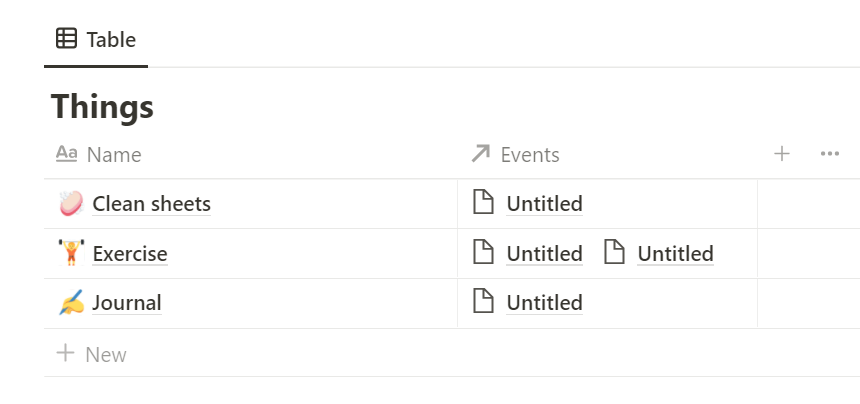
Let’s add a new column to “Things” which is an aggregation of the “Events” associated with each “Thing.” Notion calls these “Rollups.” We’ll use the following properties:
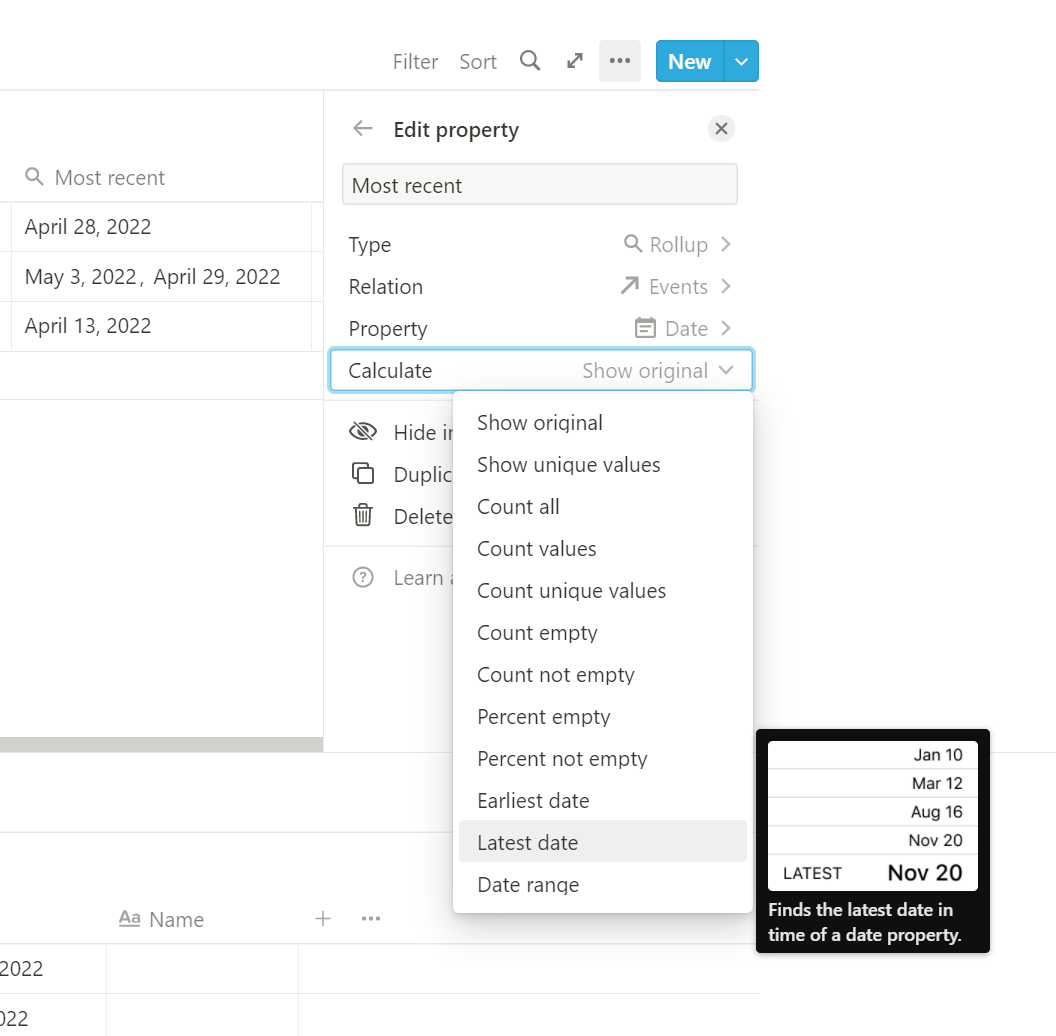
And magically, we now have a column representing the last time one of these “Things” happened.
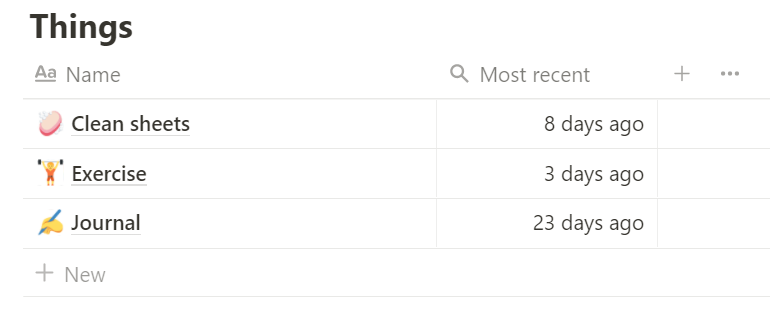
Going a step further, we can turn the “X days/months/years ago” into a single number. Maybe it’s less readable, but it’s more precise!
Let’s add another column to “Things” and we’ll select our third  Advanced
Advanced  property, Formula.
property, Formula.
 Advanced
Advanced  property, Formula.
property, Formula.
We’ll make use of
dateBetween, prop, and now to compute how many days it’s been since “Most recent.”
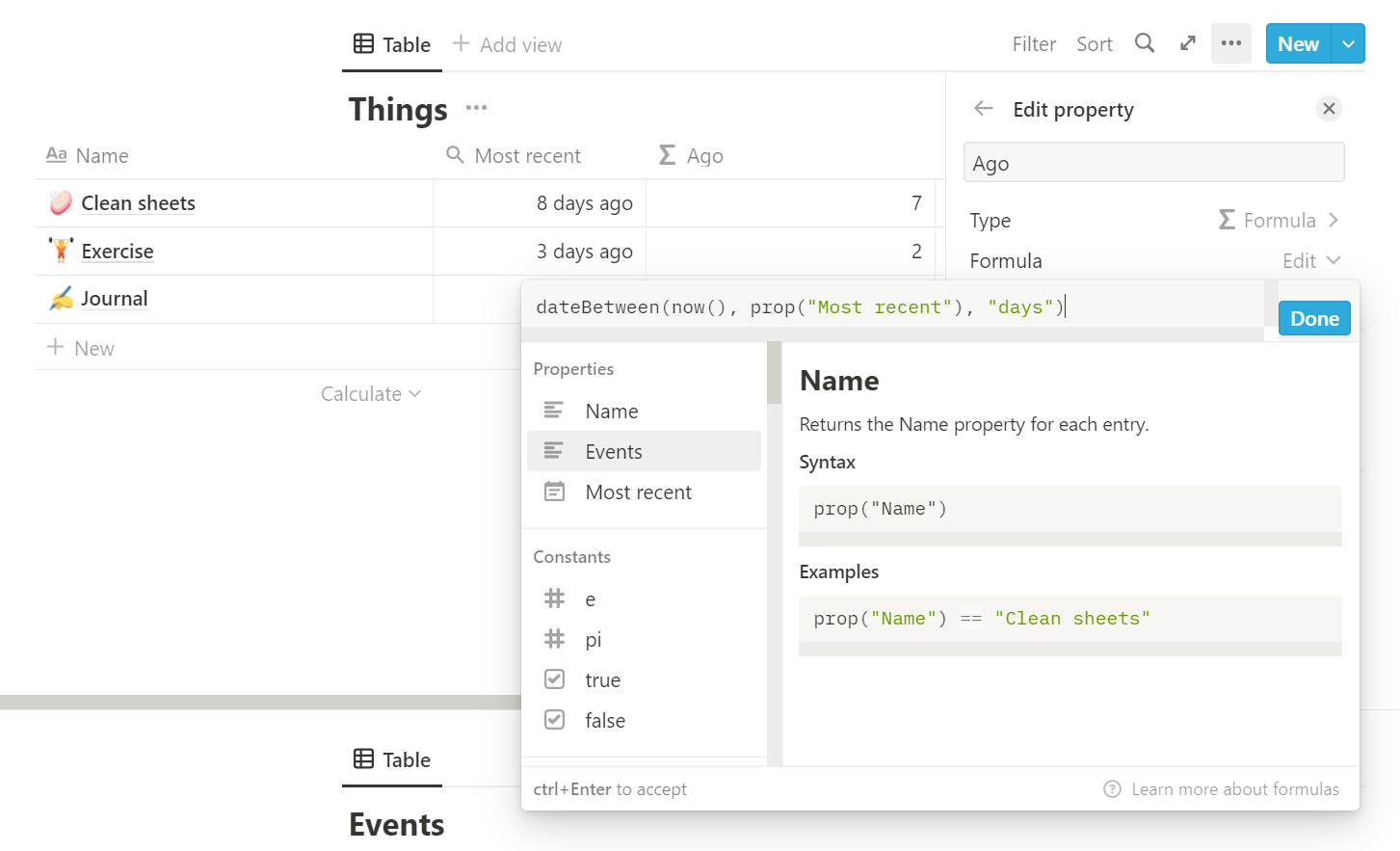
And voila, our fancy event tracker. Happy habit tracking!